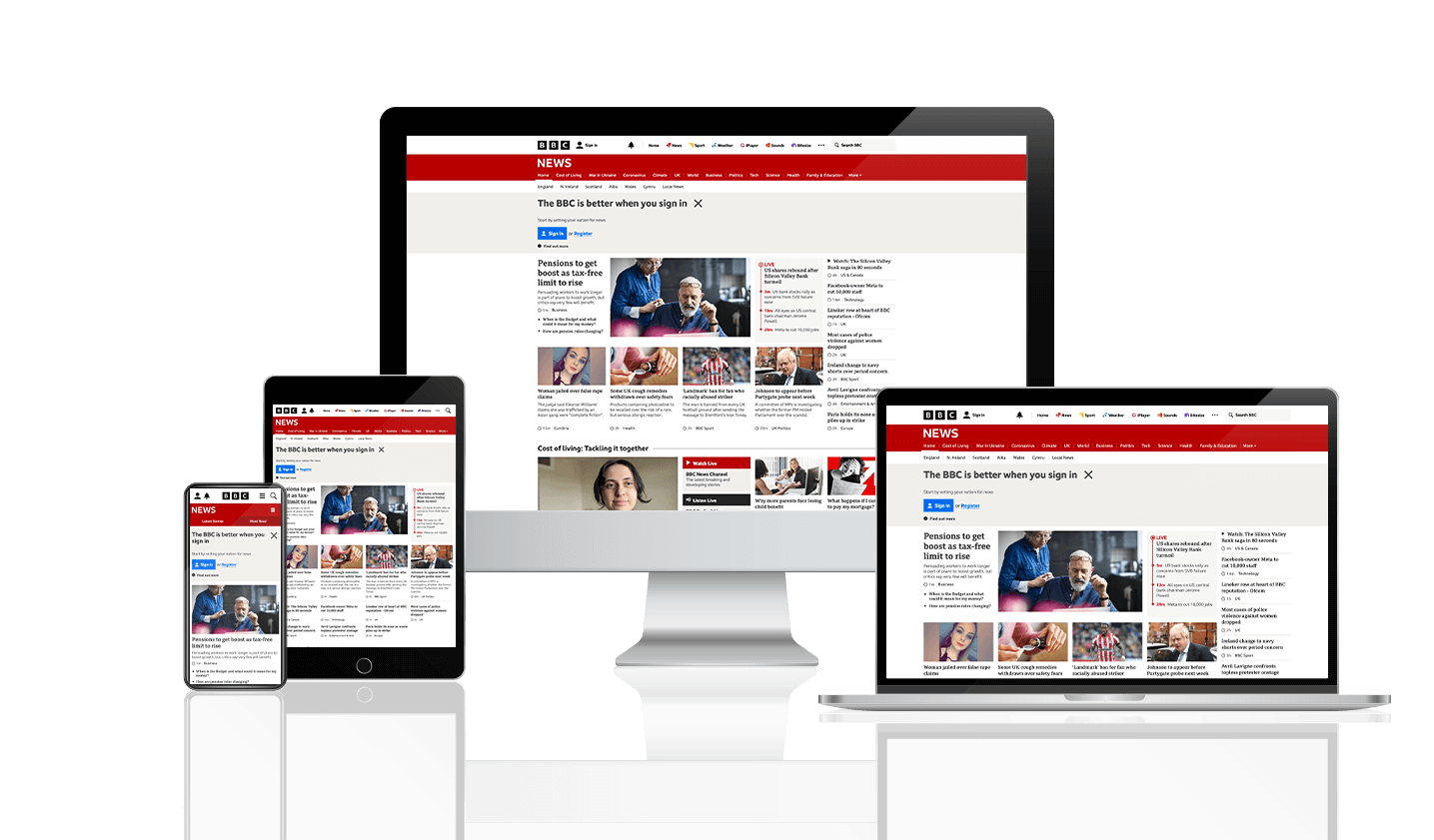The Upcoming Trends of Digital News Through stnews.live
The Influence of Social Media Site heading We Consume News Online
Social network has actually essentially transformed news consumption. It provides prompt accessibility to information, frequently eclipsing traditional media outlets. However, this rapid dissemination includes challenges. Individuals face the risk of running into false information and becoming trapped in echo chambers. The formulas driving customized material can cover diverse point of views. As these characteristics evolve, recognizing their implications comes to be essential for notified involvement in public discussion. What techniques might aid navigate this complex landscape?
The Development of News Intake in the Digital Age
As innovation advanced, the method people consumed news changed considerably in the digital age (stnews.live). Conventional newspapers and broadcast media started to decrease as the web became a primary source of information. On the internet systems used instant access to newspaper article, video clips, and podcasts, allowing individuals to stay informed any time. The comfort of mobile gadgets better accelerated this shift, enabling individuals to receive updates on the move
Additionally, the increase of news collectors and sites facilitated the consumption of diverse perspectives, equipping individuals to customize their news intake based on individual rate of interests. This development also prompted news organizations to adapt their techniques, concentrating on digital content and interesting readers with multimedia styles. Consequently, the typical barriers of time and room in news delivery diminished, causing an extra instant and personalized news experience for target markets worldwide.
The Role of Social Network Operatings Systems in News Distribution
Social network systems have transformed news circulation by supplying immediate accessibility to details. Their algorithm-driven material curation commonly prioritizes engagement over precision, resulting in substantial trustworthiness obstacles (stnews.live). As individuals navigate this landscape, the implications for news consumption and public discussion become increasingly complex
Instant News Access
Conventional news electrical outlets have actually long been the primary source of information, the surge of social media systems has dramatically changed how news is accessed and taken in. Instant news access has ended up being a trademark of the electronic age, enabling individuals to get updates in actual time. Platforms such as Twitter, Facebook, and Instagram enable news to spread quickly, typically exceeding conventional media in rate and reach. Individuals can share tales, discuss occasions, and involve with reporters, creating a vibrant interaction between the audience and news web content. This immediacy fosters a culture of seriousness, triggering users to look for details rapidly. The expectation for timely news has actually reshaped journalistic practices, compelling news companies to adapt their strategies to meet the needs of a hectic digital setting.
Algorithm-Driven Material
While customers actively engage with web content on social media, the formulas that regulate these systems play a crucial role in determining which news stories obtain visibility. These formulas analyze individual habits, preferences, and engagement metrics to curate individualized news feeds. As an outcome, specific stories may be amplified while others stay obscure, frequently focusing on thrilling or trending subjects over substantive coverage. This careful exposure shapes customers' assumptions of present occasions and affects public discussion. The dependence on algorithm-driven content can develop resemble chambers, where users are generally subjected to perspectives that straighten with their very own ideas. Consequently, the characteristics of news circulation on social media platforms significantly influence how individuals take in and interpret information in the electronic age.

Trustworthiness Challenges
As individuals progressively transform to social media for news, the integrity of info experienced on these platforms comes to be a pressing issue. The decentralized nature of social media sites enables anyone to release content, commonly blurring the lines between dependable journalism and misinformation. Formulas focus on involvement over precision, resulting in the prevalent circulation of mind-blowing or misleading tales. This atmosphere poses considerable difficulties for individuals trying to discern reliable sources. Social network systems, while striving to deal with false information through fact-checking and web content moderation, run the gauntlet for disparities and biases in their methods. Ultimately, the duty exists with customers to seriously examine the news they consume, as the quick spread of details often outpaces confirmation initiatives by platforms.
The Surge of Person Journalism and User-Generated Material
The rise of citizen journalism has equipped everyday individuals to share news and viewpoints, often supplying insights that traditional media may overlook. Nevertheless, this change additionally presents considerable difficulties, especially the spread of misinformation that can develop from unproven material. As user-generated web content ends up being a lot more widespread, the balance in between genuine voices and precision in reporting remains a crucial issue.
Encouraging Day-to-day Voices

Obstacles of False information
While the surge of resident journalism has actually opened opportunities for varied voices in the media landscape, it has actually also introduced considerable obstacles connected to misinformation. The ease of sharing details with social networks systems enables individuals to disseminate news rapidly, yet this fast spread often comes with the price of precision. User-generated material regularly lacks the strenuous fact-checking and editorial oversight that conventional journalism provides. As a result, sensationalized or incorrect stories can gain grip, deceiving target markets and forming public understanding (stnews.live). Furthermore, the blending of viewpoint and reality within social media sites complicates the difference in between legitimate info and misinformation. Therefore, customers need to navigate a significantly complex media setting, requiring important assuming abilities to determine dependable news sources among the sound

False information and Its Effects for Public Discourse
As social media sites systems progressively control the landscape of details dissemination, the proliferation of false information positions significant difficulties for public discourse. False information, commonly created to deceive important link or provoke emotional feedbacks, can distort perceptions of fact and threaten rely on legitimate resources. This sensation leads to polarized perspectives, as individuals move towards echo chambers that enhance their ideas, additionally entrenching departments within society.
The ramifications for public discussion are profound. When citizens depend on incorrect info, purposeful discussion decreases, and the autonomous procedure experiences. Moreover, false information can incite fear and confusion, influencing public wellness, safety and security, and political security. Consequently, cultivating media proficiency ends up being important, encouraging individuals to seriously evaluate details and determine fact from fiction. Addressing the challenges presented by false information is essential for maintaining the integrity of public discourse and making sure a knowledgeable population qualified of involving in positive conversations.
The Impact of Formulas on News Exposure
Offered the main role of formulas in determining content presence, their influence on news consumption is profound. These algorithms, utilized by social networks systems, prioritize specific kinds of material based on customer engagement and choices. Therefore, newspaper article that straighten my review here with prominent trends or audience rate of interests are a lot more likely to be shown plainly, while much less mind-blowing stories might be forgotten. This creates an environment where individuals are exposed mostly to details that reinforces their viewpoints, possibly bring about echo chambers.
Furthermore, the constant development of algorithms suggests that news organizations have to adjust their strategies to align with these transforming parameters, typically focusing on clickbait or psychologically charged headings. Consequently, the honesty of news coverage can be compromised, as important tales may pop over to this web-site not get the presence they deserve. The mathematical shaping of news exposure therefore plays a crucial role in affecting public understanding and understanding of existing events.
The Shift Towards Aesthetic Narration in News Media
Significantly, news media is welcoming visual narration as a powerful device to involve audiences. This approach leverages photos, video clips, infographics, and interactive elements to communicate details extra successfully than traditional text-based layouts. As focus covers reduce, visuals use a fast, impactful means to communicate intricate stories and order viewers' passion.
Platforms like Instagram and TikTok have more increased this pattern, compelling wire service to adapt their material techniques to fit these visually-driven environments. By including compelling visuals, news electrical outlets can enhance psychological connections and foster higher understanding of topical concerns.
Moreover, aesthetic narration allows for more diverse stories, showcasing multiple viewpoints via dynamic presentations. As target markets increasingly take in news with smart phones, the shift toward visuals not only satisfies customer choices however also aids to damage down barriers to details accessibility. Eventually, this evolution mirrors a wider change in just how news is produced and eaten in the digital age.
Future Fads: Browsing the Transforming Landscape of News Usage
While the digital landscape remains to advance, news intake is poised for considerable improvement driven by arising innovations and transforming audience behaviors. As fabricated knowledge and artificial intelligence advance, customized news feeds will become more common, allowing individuals to receive material customized to their interests. This customization can lead to better involvement but likewise raise worries concerning echo chambers and false information.
Furthermore, the increase of voice-activated devices and clever audio speakers will certainly influence how news is supplied, changing the focus from aesthetic to acoustic styles. This trend may motivate wire service to take on more concise and interesting audio content.

Regularly Asked Inquiries
How Do Social Media Communications Affect News Integrity?
Social network communications can substantially affect assumptions of news trustworthiness. Engagement metrics, such as sort and shares, commonly form audience depend on, with prominent posts obtaining perceived legitimacy, despite the precision or integrity of the information presented.
What Role Do Influencers Play in Shaping News Narratives?
Influencers substantially shape news narratives by leveraging their platforms to intensify particular tales, frequently customizing web content to their audience. This can result in biased point of views, influencing public perception and prioritizing sensationalism over valid reporting.
Just How Can Users Identify Reliable News Resources on Social Network?
Users can determine reliable news sources on social media sites by examining the source's reputation, confirming facts with numerous electrical outlets, evaluating the professionalism and reliability of the web content, and recognizing possible prejudices in reporting to assure precise information.
What Influence Does Social Media Carry Conventional Journalism Jobs?
Social network substantially impacts typical journalism work by changing profits designs, decreasing demand for print media, and cultivating competitors from person journalists. As a result, lots of experts face job instability and need to adjust to quickly changing media landscapes.
Just How Do Various Demographics Consume News on Social Media?
Various demographics exhibit diverse preferences for news usage on social media. Younger target markets favor platforms like TikTok and Instagram for quick updates, while older individuals often tend to like Twitter and facebook for more in-depth discussions and articles.